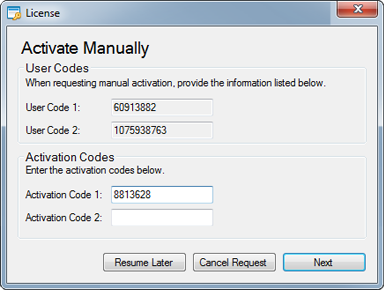
Trigger code validation is a means of achieving software activation through the manual exchange of numeric values (in other words, it is a challenge-response mechanism). Review the overview on trigger codes for additional, high-level details on how this works and how to generate activation codes.
Keep in mind that any challenge-response mechanisms such as trigger code validation can be reverse engineered (similar to how "key generators" are available on the Internet for many popular software applications). Therefore, it is best to use Protection PLUS 5 SDK's standard online and manual activation features when possible, which offer much stronger security than trigger codes.
Before you can add support for any form of activation, your application must first initialize the context. Once activation has been implemented, the application will also need to include copy protection to ensure it only runs on devices in which it was activated.
To process trigger code activations, you will need to collect input from the user using a form/dialog or some other means. Most activation forms/dialogs are pretty similar, and can be designed similar to the illustration below.

As shown above, your application would need to show the User Code 1 and User Code 2 values to the user. The example code below outlines how you can add support for trigger code activations to your application.
A delayed trigger code is simply where you allow the user to process a trigger code activation after having closed and re-launched your application. The problem this solves primarily revolves around how the activation form/dialog initializes the User Code 1 value, as this value is randomized. Although this is not typically an issue with telephone activations, this can pose a challenge when the user might email, fax, or text the user code values, close the application, and re-launch the application to complete the activation later. If your application needs to support this kind of delay between when the user sends the user code values and when the user completes the activation, your application may need to implement this feature by storing the user code 1 value somewhere. This can be stored in a hidden file or registry key of your choosing, and it is strongly recommended that you consider encrypting the value as well.